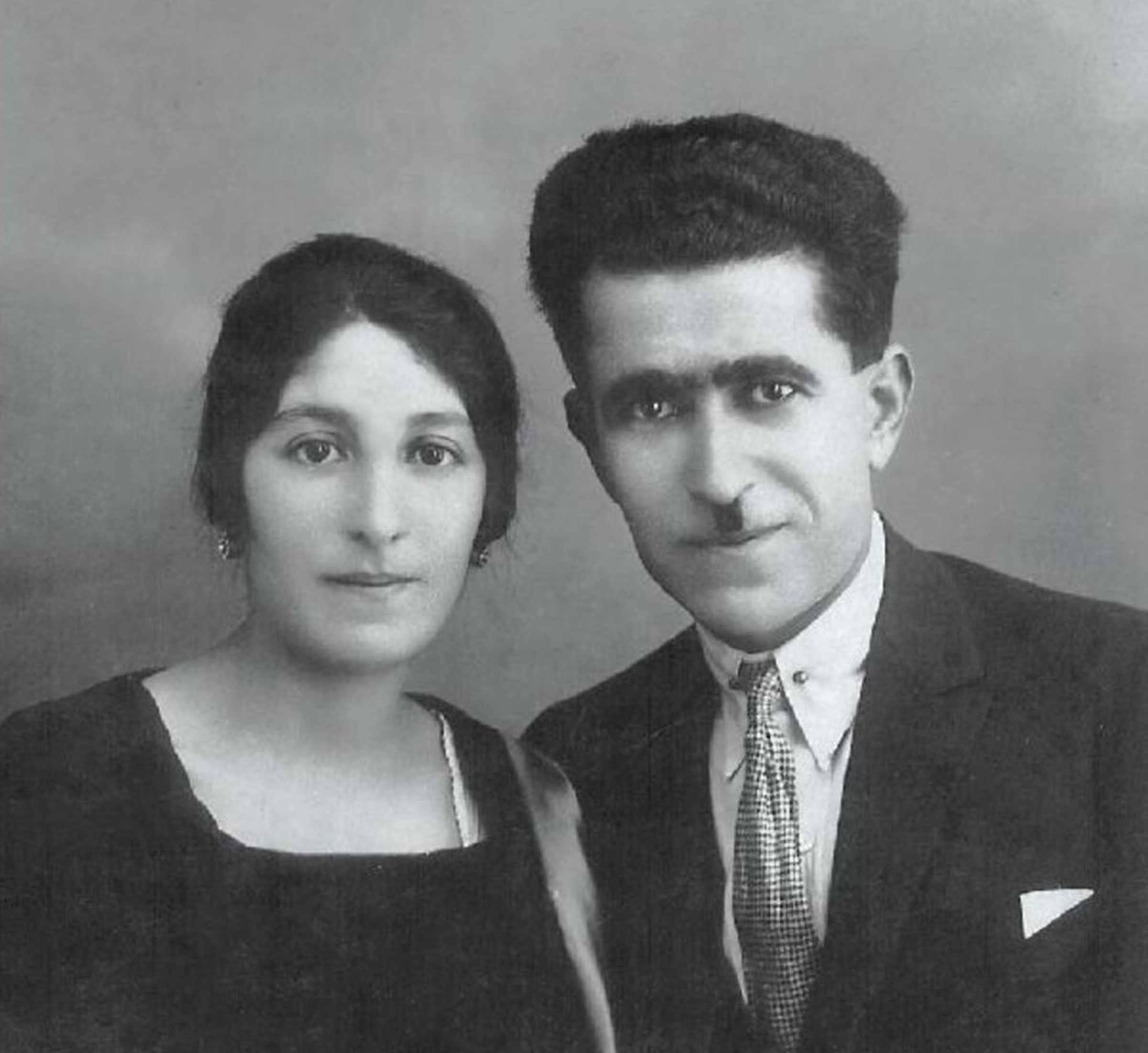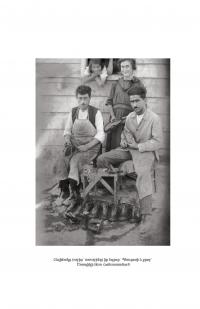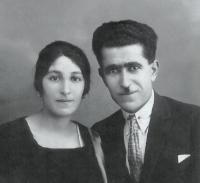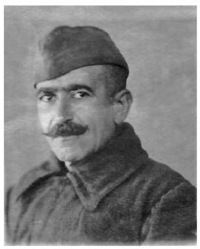The memories of every Armenian who has gone through the horrors of Genocide can with no exaggeration be regarded as evidence of miraculous survival. (Hayk Demoyan, Director of the Armenian Genocide Museum-Institute)
Hovhannes Karapetyan (first surname Keopityan) was born in 1899 in city Adabazar, where more than half of the population were Armenians and the city was located not far from Istanbul in the Ottoman Turkey. His father, Karapet, who was a butcher, thought that his children must by all means get education and he did all he could for the sake of it. Little Hovhannes used to be called Onik in the Armenian family that was why he was also called the same way in the primary school. In 1908 he entered the Armenian gymnasium in Adabazar where he learnt Turkish and French and deeply studied literature. At the same time he studied the art of trade at his relatives’ shop.
In 1914 before the very start of World War I when Hovhannes was in his 6th year of school the gymnasium was closed down by the Turkish authorities. At the beginning of 1915 the Turkish authorities took away all the weapons from Armenians, explaining it as a wartime demand. Armenian young men were all taken to the Turkish army at that time.
In spring the Turkish authorities announced to the Armenian population about their resettlement to the central and southern regions of the country for their safety. Keopityan’s family, which consisted of a father, mother, older son Hovhannes, his younger brother Petros (Peter) and juvenile and baby sisters, was also put in a train that arrived in Alayund station not far from city Keotakia, the namesake province. Hundreds of thousands of Armenians who had gathered at the station were all driven on foot in the direction of Syrian Desert Der Zor. At the very beginning of their path they saw a lot of dead Armenians on the roadside, both adults and children. Those who did not obey would be taken 20-30 meters away by the gendarmes and would be shot to dead.
Not being able to stand it some people would commit suicide. Others would die from starvation, thirst and diseases. Hovhannes’ new born sister also passed away. Thus, moving by the banks of Euphrates, where mutilated corpses of Armenians were floating, they reached the village of Le Soir. People, who were suffering from thirst, drank that water. They did not care for anything. Hovhannes’ second sister also passed away at that time, Hovhannes himself got sick. He could survive only because they did not move for some time and were at the concentration camp close to the village of Le Soir where over 100.000 Armenians had gathered. After a week, one part of the Armenians was driven in the direction of Aleppo; another part was driven in the direction of the Der Zor desert. Part of the Keopityan’s family that could later survive was among them. In the beginning the Turkish gendarmes guarding them were replaced by Chechens who stood out for their particular brutality. With the aim of extracting the last remaining money from the Armenians they would sell a kilo of rice, flour or dates for one gold. Those without money died from starvation, thirst or went crazy and were immediately killed by the Chechens.
Once, men and young boys were all gathered to allegedly be taken to work. Then came the news that they had all been killed by the Chechens. Hovhannes’ father was among them. Hovhannes’ mother dressed Hovhannes in women’s clothes and saved him in that way. At the very beginning of their way through the desert, a local Arab resident offered to take Hovhannes’ young brother Petros (Peter) to him. The mother agreed trying to save her son in that way.
Thus they reached the very end of the desert. Later, before the massacre, one of the guarding Chechens, Osman, finding out that Hovhannes was a boy in women’s clothes, was taken aback by the fact that being a teenager, Hovhannes could miraculously go through all the checkpoints. After all, he decided to leave Hovhannes alive and took him and his two little sisters to his place.
Osman sold Hovhannes’s sisters to the Arabs of the neighboring village and he made Hovhannes as the shepherd of his sheep. Hovhannes lived at his place for more than a year but when he lost one sheep in the desert and Osman promised to kill him for that oversight, Hovhannes ran away from him. For another year he worked as a watchman for the road workers who were building the Baghdad Railway, then a year in the quarries.
Here he was appointed as the head of the quarry for his diligent work; his numeracy and language skills came in hand. A year later, he was hired by a clerk at the headquarters of the Turkish army, where he was able to get a pass for himself for traveling around Turkey and ran away from there. On his way to his native Adabazar Hovhannes met his own sister Astghik, who had been sold to the Arabs of neighboring village by Chechen Osman, at an Armenian organization that was working under the protection of Western benefactors, distributing shelters for orphans.
In Adabazar he met his uncle who hadn’t been subjected to deportation as his family and he had been out of the city. His own brother who had been saved by the Arab during the deportation was also found. So three of them lived with their uncle before the Kemalist movement after which together with the Greek soldiers who were then successfully fighting with the Turks retreated to Greece as the lives of the Armenians were again under threat. After almost two years they again returned to Turkey where his father’s close friend Manol, Greek by nationality, helped them to settle down and they lived there until 1921. During the exchange of prisoners between the Turks and Greeks Hovhannes together with his brother and sister again moved to Athens, Greek. But it was hard to live here too as poverty and unemployment reigned everywhere. The fact that Hovhannes was a shoemaker and could sew shoes saved them from starvation.
At the beginning of 1920s Armenians were accepted both by France and the USA.
Armenia also expressed its readiness to receive compatriots who had escaped from the Turkish scimitar. In 1925 Hovhannes moved to Armenia with his brother and sister where the Bolsheviks were already ruling. At that time his brother and he changed their unpronounceable surname Keopityan into Karapetyan as their father’s name was Karapet.
Working as shoemakers with his brother, they could save some money and buy their own small house. In 1928, Hovhannes married a refugee from the Turkish Izmit Berkrui, Khachatryan, who gave birth to their daughter Alice in 1930 and to their son Felix in 1936. Starting from 1927 Hovhannes has trained to become a specialist in procurement of wool and eggs and he works in Armcooperation. The knowledge he got during his childhood and adolescence in Adabazar has helped him a lot.
In 1941, during the years of World War II, Hovhannes voluntarily went to the front, getting to Berlin, he then came back in 1945 with military awards.
After thirty years in 2011, his son Felix Karapetyan who worked as a chemistry teacher at Yerevan State University published a book with his father’s memories “Revived Life between Real and Incredible Horrors” dedicating it to the 95th commemoration of the Armenian Genocide.



